Canonical bases and cluster algebras III
M. Bernard Leclerc
Bernard Leclerc is a Professor of Mathematics at the University of Caen, working in the domain of algebraic combinatorics and representation theory at the Laboratoire de Mathématiques Nicolas Oresme (LMNO). He is a Senior Fellow of the Institut de France (2010), and editor of the Journal of Combinatorial Theory A and the Mathematische Zeitschrift.
In the early 90's, Kashiwara defined crystals as limits of bases of representations of quantum groups, and developed their theory in various situations. Subsequent works by Kashiwara, Lusztig, Littelmann, and Berenstein-Fomin-Zelevinsky elucidated the structure of these combinatorial objects. It was later discovered that Kashiwara's crystals also describe certain geometrical situations. For instance, as observed by Braverman-Gaitsgory, they occur in the geometric Satake correspondence. This theory, due to Lusztig, Ginzburg, Beilinson-Drinfeld, Mirković-Vilonen, and Ngô-Polo provides a construction of representations of a reductive group G from the geometry of the affine Grassmannian of the Langlands dual of G. We will study properties of bases that naturally arise in this context. This is joint work with S. Gaussent and P. Littelmann.
Durée :
Kyoto lecture - Series of talks in honour of Masaki Kashiwara
Du au
IRMA, Strasbourg
Université de Strasbourg - USIAS - Institute for Advanced Study
Following Mikio Sato’s pioneering work, Masaki Kashiwara developed, starting from his thesis in the seventies, the theory of D-modules. The point of view is to study a system of linear partial differential equations by using the methods of modern algebraic geometry and homological algebra. This change of paradigm led to a new field of research in mathematics, now called Algebraic Analysis. Among his striking results obtained in collaboration or alone, let us cite the involutivity of the characteristic variety of a D-module, the index theorem, the Riemann-Hilbert correspondence for holonomic D-modules in the regular case and recently, in the irregular case. Kashiwara always kept a special interest for representation theory. One of his celebrated results is the proof, obtained in the early eighties in collaboration with Brylinski, of the Kazhdan-Lusztig conjecture (also proven independently by Beilinson and Berstein). This conjecture proposed a mysterious equality between multiplicities in the representation theory of semi-simple Lie algebras and numerical data encoding singularities of Schubert varieties. In their proof the theory of D-modules provided a geometrical bridge connecting the two sides of the equality. Motivated by the advances in the theory of integrable systems in the eighties, in particular the discovery of quantum groups, Kashiwara introduced crystal bases. These objects can be seen metaphorically as the residue of bases of representation of quantum groups when the temperature tends toward zero. There are now an important tool for the combinatorial description of representations of semi-simple Lie algebras, or more generally of Kac-Moody or even Borcherds algebras. They come together with bases called global crystal bases or canonical bases whose study has led to the current important theory of cluster algebras.
Thème(s) : Mathématiques
Sciences fondamentales
Producteur : Université de Strasbourg
Réalisateur : Université de Strasbourg
Series of talks in honour of Masaki Kashiwara
Crystals and bases of tensor products
M. Pierre Baumann
Pierre Baumann is CNRS researcher at the Institut de Recherche Mathématique Avancée (IRMA) in Strasbourg. He works in the area of geometric representation theory of classical groups and algebraic combinatorics, in particular crystal bases in the sense of Kashiwara.
In the early 90's, Kashiwara defined crystals as limits of bases of representations of quantum groups, and developed their theory in various situations. Subsequent works by Kashiwara, Lusztig, Littelmann, and Berenstein-Fomin-Zelevinsky elucidated the structure of these combinatorial objects. It was later discovered that Kashiwara's crystals also describe certain geometrical situations. For instance, as observed by Braverman-Gaitsgory, they occur in the geometric Satake correspondence. This theory, due to Lusztig, Ginzburg, Beilinson-Drinfeld, Mirković-Vilonen, and Ngô-Polo provides a construction of representations of a reductive group G from the geometry of the affine Grassmannian of the Langlands dual of G. We will study properties of bases that naturally arise in this context. This is joint work with S. Gaussent and P. Littelmann.
On the Riemann-Hilbert correspondence III
M. Andrea D'Agnolo
Andrea D'Agnolo is Professor of Mathematics at the University of Padua. He works in the area of Algebraic and Microlocal Analysis.
Hilbert's twenty-first problem (also known as the Riemann-Hilbert problem) asks for the existence of linear ordinary differential equations with prescribed regular singularities and monodromy. In higher dimensions, Deligne formulated it as a correspondence between regular meromorphic flat connections and local systems. In the early eighties, Kashiwara generalized it to a correspondence between regular holonomic D-modules and perverse sheaves on a complex manifold.
The analogous problem for possibly irregular holonomic D-modules (a.k.a. the Riemann–Hilbert–Birkhoff problem) has been standing for a long time. One of the difficulties was to find a substitute target to the category of perverse sheaves. In the 80's, Deligne and Malgrange proposed a correspondence between meromorphic connections and Stokes filtered local systems on a complex curve. Recently, Kashiwara and the speaker solved the problem for general holonomic D-modules in any dimension. The construction of the target category is based on the theory of ind-sheaves by Kashiwara-Schapira and uses Tamarkin’s work on symplectic topology. Among the main ingredients of the proof is the description of the structure of flat meromorphic connections due to Mochizuki and Kedlaya
Canonical bases and cluster algebras III
M. Bernard Leclerc
Bernard Leclerc is a Professor of Mathematics at the University of Caen, working in the domain of algebraic combinatorics and representation theory at the Laboratoire de Mathématiques Nicolas Oresme (LMNO). He is a Senior Fellow of the Institut de France (2010), and editor of the Journal of Combinatorial Theory A and the Mathematische Zeitschrift.
In the early 90's, Kashiwara defined crystals as limits of bases of representations of quantum groups, and developed their theory in various situations. Subsequent works by Kashiwara, Lusztig, Littelmann, and Berenstein-Fomin-Zelevinsky elucidated the structure of these combinatorial objects. It was later discovered that Kashiwara's crystals also describe certain geometrical situations. For instance, as observed by Braverman-Gaitsgory, they occur in the geometric Satake correspondence. This theory, due to Lusztig, Ginzburg, Beilinson-Drinfeld, Mirković-Vilonen, and Ngô-Polo provides a construction of representations of a reductive group G from the geometry of the affine Grassmannian of the Langlands dual of G. We will study properties of bases that naturally arise in this context. This is joint work with S. Gaussent and P. Littelmann.

